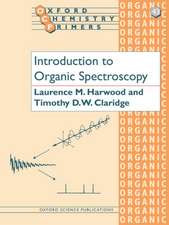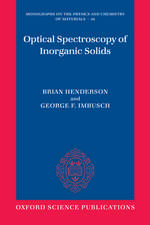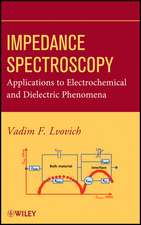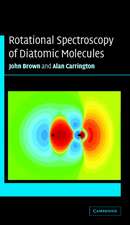Non-Photochemical Quenching and Energy Dissipation in Plants, Algae and Cyanobacteria: Advances in Photosynthesis and Respiration, cartea 40
Editat de Barbara Demmig-Adams, Gyozo Garab, William Adams III, Govindjeeen Limba Engleză Hardback – 4 dec 2014
Din seria Advances in Photosynthesis and Respiration
- 24%
 Preț: 1620.59 lei
Preț: 1620.59 lei - 18%
 Preț: 2566.01 lei
Preț: 2566.01 lei - 18%
 Preț: 1397.68 lei
Preț: 1397.68 lei - 18%
 Preț: 1855.74 lei
Preț: 1855.74 lei - 18%
 Preț: 1850.52 lei
Preț: 1850.52 lei - 24%
 Preț: 1053.59 lei
Preț: 1053.59 lei - 24%
 Preț: 1601.81 lei
Preț: 1601.81 lei - 24%
 Preț: 1596.44 lei
Preț: 1596.44 lei - 18%
 Preț: 1234.46 lei
Preț: 1234.46 lei - 18%
 Preț: 1830.17 lei
Preț: 1830.17 lei - 18%
 Preț: 1226.60 lei
Preț: 1226.60 lei - 18%
 Preț: 1239.85 lei
Preț: 1239.85 lei - 24%
 Preț: 3132.31 lei
Preț: 3132.31 lei - 18%
 Preț: 1851.00 lei
Preț: 1851.00 lei - 18%
 Preț: 1865.68 lei
Preț: 1865.68 lei - 18%
 Preț: 1858.91 lei
Preț: 1858.91 lei - 24%
 Preț: 1095.64 lei
Preț: 1095.64 lei - 24%
 Preț: 1593.49 lei
Preț: 1593.49 lei - 24%
 Preț: 1668.30 lei
Preț: 1668.30 lei - 24%
 Preț: 1979.68 lei
Preț: 1979.68 lei - 24%
 Preț: 1570.81 lei
Preț: 1570.81 lei - 24%
 Preț: 1071.15 lei
Preț: 1071.15 lei - 24%
 Preț: 1065.36 lei
Preț: 1065.36 lei - 24%
 Preț: 1062.77 lei
Preț: 1062.77 lei - 24%
 Preț: 1060.89 lei
Preț: 1060.89 lei - 24%
 Preț: 1125.57 lei
Preț: 1125.57 lei - 18%
 Preț: 1239.37 lei
Preț: 1239.37 lei
Preț: 1686.52 lei
Preț vechi: 2056.73 lei
-18% Nou
Puncte Express: 2530
Preț estimativ în valută:
322.71€ • 351.65$ • 271.93£
322.71€ • 351.65$ • 271.93£
Carte tipărită la comandă
Livrare economică 23 aprilie-07 mai
Preluare comenzi: 021 569.72.76
Specificații
ISBN-13: 9789401790314
ISBN-10: 9401790310
Pagini: 688
Ilustrații: XXXVIII, 649 p. 170 illus., 88 illus. in color.
Dimensiuni: 178 x 254 x 42 mm
Greutate: 1.4 kg
Ediția:2014
Editura: SPRINGER NETHERLANDS
Colecția Springer
Seria Advances in Photosynthesis and Respiration
Locul publicării:Dordrecht, Netherlands
ISBN-10: 9401790310
Pagini: 688
Ilustrații: XXXVIII, 649 p. 170 illus., 88 illus. in color.
Dimensiuni: 178 x 254 x 42 mm
Greutate: 1.4 kg
Ediția:2014
Editura: SPRINGER NETHERLANDS
Colecția Springer
Seria Advances in Photosynthesis and Respiration
Locul publicării:Dordrecht, Netherlands
Public țintă
ResearchCuprins
From the Series Editors.- Preface.- 1. The Non-Photochemical Quenching of the Electronically Excited State of Chlorophyll a in Plants: Definitions, Timelines, Viewpoints, Open Questions; George C. Papageorgiou, Govindjee.- 2. Lessons from Nature: A Personal Perspective; William W. Adams III, Barbara Demmig-Adams.- 3. Developments in Non-Photochemical Quenching Research – Emergence of Key Ideas, Theories and Experimental Approaches; Peter Horton.- 4. Photophysics of Photosynthetic Pigment-Protein Complexes; Evgeny E. Ostroumov et al.- 5. Non-Photochemical Quenching Mechanisms in Intact Organisms as Derived from Ultrafast-Fluorescence Kinetic Studies; Alfred R. Holzwarth, Peter Jahns.- 6. How Protein Disorder Controls Non-Photochemical Fluorescence Quenching; Tjaart P. J. Krüger et al.- 7. Context, Quantification, and Measurement Guide for Non-Photochemical Quenching of Chlorophyll Fluorescence; Barry A. Logan et al.- 8. Spectroscopic Investigation of Carotenoids Involved in Non-Photochemical Fluorescence Quenching; Tomáš Polívka, Harry A. Frank.- 9. Electronic Carotenoid-Chlorophyll Interactions Regulating Photosynthetic Light Harvesting of Higher Plants and Green Algae; P. Jomo Walla et al.- 10. Antenna Protein Conformational Changes Revealed by Resonance Raman Spectroscopy; Andrew A. Pascal et al.- 11. Fucoxanthin-Chlorophyll-Proteins and Non-Photochemical Fluorescence Quenching in Diatoms;
Claudia Büchel.- 12. Involvement of a Second Xanthophyll Cycle in Non-Photochemical Quenching of Chlorophyll Fluorescence: the Lutein Epoxide Story; Raquel Esteban, José I. García-Plazaola.- 13. PsbS-dependent Non-Photochemical Fluorescence Quenching; Matthew D. Brooks et al.- 14. Molecular Mechanisms for Activation of Non-Photochemical Fluorescence Quenching: From Unicellular Algae to Mosses and Higher Plants; Tomas Morosinotto, Roberto Bassi.- 15. Are Chlorophyll-Carotenoid Interactions Responsible for Rapidly Reversible Non-Photochemical Fluorescence Quenching?; Herbert van Amerongen.- 16. Structural Changes and Non-Photochemical Quenching of Chlorophyll a Fluorescence in Oxygenic Photosynthetic Organisms; Győző Garab.- 17. Non-Photochemical Fluorescence Quenching and the Dynamics of Photosystem II Structure; Alexander V. Ruban, Conrad W. Mullineaux.- 18. Control of Non-Photochemical Exciton Quenching by the Proton Circuit of Photosynthesis; Deserah D. Strand, David M. Kramer.- 19. Desiccation-Induced Quenching of Chlorophyll Fluorescence in Cryptogams; Wolfgang Bilger.- 20. The Peculiar Features of Non-Photochemical Fluorescence Quenching in Diatoms and Brown Algae; Johann Lavaud, Reimund Goss.- 21. High Light Acclimation in Green Microalgae; Giovanni Finazzi, Jun Minagawa.- 22. Mechanisms Modulating Energy Arriving at Reaction Centers in Cyanobacteria; Diana Kirilovsky et al.- 23. Photosystem II Efficiency and Non-Photochemical Fluorescence Quenching in the Context of Source-Sink Balance; William W. Adams III et al.- 24. Non-Photochemical Fluorescence Quenching in Contrasting Plant Species and Environments; Barbara Demmig-Adams et al.- 25. Non-Photochemical Fluorescence Quenching Across Scales: from Chloroplasts to Plants to Communities; Erik H. Murchie, Jeremy Harbinson.- 26. Beyond Non-Photochemical Fluorescence Quenching: the Overlapping Antioxidant Functions of Zeaxanthin and Tocopherols; Michel Havaux, José I. García-Plazaola.- 27. Thermal Energy Dissipation in Plants under Unfavorable Soil Conditions; Fermín Morales et al.- 28. Chloroplast Photoprotection and the Trade-Off Between Abiotic and Biotic Defense; Barbara Demmig-Adams et al.- Subject Index.
Claudia Büchel.- 12. Involvement of a Second Xanthophyll Cycle in Non-Photochemical Quenching of Chlorophyll Fluorescence: the Lutein Epoxide Story; Raquel Esteban, José I. García-Plazaola.- 13. PsbS-dependent Non-Photochemical Fluorescence Quenching; Matthew D. Brooks et al.- 14. Molecular Mechanisms for Activation of Non-Photochemical Fluorescence Quenching: From Unicellular Algae to Mosses and Higher Plants; Tomas Morosinotto, Roberto Bassi.- 15. Are Chlorophyll-Carotenoid Interactions Responsible for Rapidly Reversible Non-Photochemical Fluorescence Quenching?; Herbert van Amerongen.- 16. Structural Changes and Non-Photochemical Quenching of Chlorophyll a Fluorescence in Oxygenic Photosynthetic Organisms; Győző Garab.- 17. Non-Photochemical Fluorescence Quenching and the Dynamics of Photosystem II Structure; Alexander V. Ruban, Conrad W. Mullineaux.- 18. Control of Non-Photochemical Exciton Quenching by the Proton Circuit of Photosynthesis; Deserah D. Strand, David M. Kramer.- 19. Desiccation-Induced Quenching of Chlorophyll Fluorescence in Cryptogams; Wolfgang Bilger.- 20. The Peculiar Features of Non-Photochemical Fluorescence Quenching in Diatoms and Brown Algae; Johann Lavaud, Reimund Goss.- 21. High Light Acclimation in Green Microalgae; Giovanni Finazzi, Jun Minagawa.- 22. Mechanisms Modulating Energy Arriving at Reaction Centers in Cyanobacteria; Diana Kirilovsky et al.- 23. Photosystem II Efficiency and Non-Photochemical Fluorescence Quenching in the Context of Source-Sink Balance; William W. Adams III et al.- 24. Non-Photochemical Fluorescence Quenching in Contrasting Plant Species and Environments; Barbara Demmig-Adams et al.- 25. Non-Photochemical Fluorescence Quenching Across Scales: from Chloroplasts to Plants to Communities; Erik H. Murchie, Jeremy Harbinson.- 26. Beyond Non-Photochemical Fluorescence Quenching: the Overlapping Antioxidant Functions of Zeaxanthin and Tocopherols; Michel Havaux, José I. García-Plazaola.- 27. Thermal Energy Dissipation in Plants under Unfavorable Soil Conditions; Fermín Morales et al.- 28. Chloroplast Photoprotection and the Trade-Off Between Abiotic and Biotic Defense; Barbara Demmig-Adams et al.- Subject Index.
Recenzii
“The editors are to be complimented now for compiling such a comprehensive collection of wisdom on energy dissipation in photosynthetic organisms. … the library of any institution committed to teaching frontline plant biology provide access to this book for graduate students, postdocs, and research leaders. Moreover, it is indispensible for any laboratory engaged in next generation research in photosynthesis … .” (Barry Osmond, Photosynthesis Research, Vol. 24, 2015)
Textul de pe ultima copertă
Harnessing the sun’s energy via photosynthesis is at the core of sustainable production of food, fuel, and materials by plants, algae, and cyanobacteria. Photosynthesis depends on protection (photoprotection) against the perils of intense sunlight. The first line of defense among a cascade of photoprotective mechanisms is the safe removal of excess excitation energy within the light-harvesting system. The widely used indicator for photoprotective energy dissipation (thermal de-excitation of excited-state chlorophyll) is the quick, facile, and non-destructive assessment of non-photochemical quenching of chlorophyll fluorescence (NPQ). By placing light harvesting and photoprotection into the context of whole-organism function, this book directs the use of NPQ to aid in the identification of plant and algal lines with superior stress resistance and productivity. Furthermore, this volume addresses open questions in the interpretation of the molecular mechanisms of light harvesting and energy dissipation, the resolution of which should aid in the development of artificial photosynthetic systems. A comprehensive picture – from theory to practice, and from single molecules to organisms in ecosystems – is presented. In addition to providing current views of the leading specialists in this area, this book includes basic and practical information for non-specialists. For example, this book critically examines uses and misuses of the term NPQ and of advantages and pitfalls of NPQ measurements, and presents concrete recommendations for all concerned.
Caracteristici
Covers photoprotection over multiple scales from the molecule to the ecosystem Includes a broad range of disciplines, e.g. photophysics, biochemistry, molecular genetics, physiology, ecology, and evolution Integrates photosynthesis and photoprotection into the context of whole-plant function All chapters are authored by the leading authorities in each sub-discipline Includes supplementary material: sn.pub/extras











